The Fisherman and the Net: Geometric Symbolism in the Gospel of John (II of II)

The full geometric symbol of the Jesus and fish catching parable from left to right with the Net consisting of two tetraktys, 16 (17) squares in all, each of which is 153 in width and in total each, 612 in length for each side (the gematria value for Zeus)
What we’re left with if we are to believe this geometric formulation of the miraculous tale of Jesus and the fishes with his seven disciples in the Sea of Galilee in the Gospel of John is a geometric figure – if transposed from top to bottom rather than left to right is one which the inner circle represents the boat and includes circles of circumference of 1925 (gematria value of “Simon Peter”) representing each of the seven disciples, with Simon Peter being in the central location of the seven disciples within the circular boat, the boat itself having a diameter of 1224 which is the gematria value of “Fishes” and “The Net”, and a radius of 612 which is the gematria value of “Zeus”. The net, again cast to the right of the boat by the disciples for the catching of fish and represented by another vesica piscis with a width of 612 and a height of 1060. Furthermore, each of the rhombus squares within the net have a width of 153, there are 17 rhombuses in total (including the encompassing rhombus), and the numbers 1-17 when added together also equal 153. The perimeter of the net in its entirety is 2448, or 153 x 4 x 4.
The final geometric construct has a top portion whose dimensions are determined by the gematria value of the gematria value for “The Fisherman’s Coat” (1060 again) as well as the gematria value of “Simon Peter” (1925). This figure rests above the circle representing the disciples in the boat whose dimensions again are determined by the gematria value of “Simon Peter” (1925). The final figure, now at the bottom of the figure, representing the net that was cast by the disciples to the side of the boat, contains a vesica piscis shape precisely equivalent to the one that contains Peter’s coat at the (now) top of our figure, the net having a perimeter of 2448 and consisting of 16 rhombus squares, each 153 in width, and whose vesica piscis width is 612, the gematria value for “Zeus”.
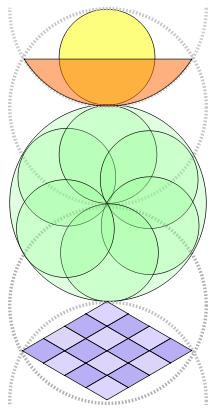
Geometric Transliteration of the tale of Jesus and the miraculous catch of 153 fish showing the three distinct and yet related perspectives on reality of which the Soul, via the Logos, bridges the two to provide for the ascent of the Soul into the upper realms.
Here the inner circle includes the seven disciples with the boat, where each inner circle has a circumference of 1925 (“Simon Peter” gematria value), the diameter of the overall circle representing the boat having a value of 1224 (gematria value of “Fishes” and “The Net”) a radius of 612 (the gematria value of “Zeus”), with the net itself having a width of 612 as well and therefore a height of 1060, again closely related to the gematria values for both “Apollo” and “Pleroma” which is calculated using the square root of 3, of which 153 is an important factor as established quite clearly by Archimedes, and where each of the rhombus squares within the net are 153 in width and where the perimeter of the net in its entirety is 153x4x4 or 2448.
The final geometric construct, in our diagram placed on top of the whole figure, is sized by the gematria value of Peter’s coat (1060 again) and is placed precisely above the circle representing the disciples consistent with the circle representing the net below the disciples boat, with a vesica piscis shape exactly like the one that contains the net below the circle representing the boat, and containing within it a circle of diameter 612 and cut in half by presumably Peter’s coat, resembling the setting Sun, again a significant symbol in the mystery and esoteric traditions that flourished in classical Greek antiquity.
Leaving aside for a moment skepticism that might arise from the construction of this geometric diagram simply from the number 153 combined with the gematria values of some key terms in the language itself from which the shape is constructed, one must keep in mind that the Gospel of John more so than any other Gospel, is the one that contains the most explicit references to the Greek philosophical tradition that preceded it, most notably with its reliance on the Logos as a primordial construct from which the universe first emanates and which is associated with Jesus himself as the Logos incarnate in the world of man.
But the symbology of the geometry embedded in the story is not finished yet however, for there is a whole other level of geometric values and relationships that can be drawn out of the diagram if you extend it a bit further. Drawing on metaphysical theories of a divine triad which reflected the complete cosmic world order and specifically mankind’s place in it, once can view the top most circle – the one representing Peter – as representing the ultimate reality, the One of the Neo-Platonist tradition which had begun to take shape at around the same time that New Testament canon was established – most notably with Plotinus, Porphyry, Iamblichus and Proclus who although were not Christians, still were able to flourish before the pagan traditions were wiped out as the Christian orthodox Church consolidated power.
In this extrapolation of the cosmology embedded in Plato’s Timaeus, and in a tradition that synthesized not only Stoic principles but also Peripatetic (Aristotle) philosophy, the Monad, Dyad and Triad of the Pythagoreans had evolved to reflect the indivisible One from which all of creation emerged, the divine Intellect, or Mind which albeit a reflection of the One was the source of the Dyad, or the multiplicity that was found in the material universe, and then the Soul which was contained attributes of both, both divine and sensual, the goal of life being the ascent of the Soul into the realm of the Good, the abode of intelligibles of Forms, until ultimately a union of the Soul with the Demiurge was possible, consistent with the mystery traditions of Greece, and Egypt, which came before them.
In this sacred geometry than can be gleaned from the parable of Jesus and his disciples and the miraculous catching of the 153 fish, the bottom-most geometric figure which constructed from the gematria values of “Fishes” and “The Net” represents the material world to which our bodies are bound, via the metaphor of the Net, which requires grace, or in this case the messiah Jesus Christ (the Logos in the flesh to the early Christian communities), to release us from this bondage. The message of the symbology is then that through the belief and faith in Christ and his teachings, as reflected in the middle tier of circles representing the disciples of Jesus who carried forth his message, that this transition from the material world to the spiritual world could in fact be realized.
The connection between Jesus and the Temple at Delphi and Apollo is further crystallized by the fact that if you draw a full circle around the entire diagram, all three circles symbolizing the disciples in the boat, the net and fish, and Simon Peter, the circumference of the circle itself is 7690, 769 being the gematria value of “Pythios”, the holy name for Apollo at the Temple of Delphi. In this larger geometric symbology, the connection between Jesus the new savior and the Temple at Delphi and Apollo, the historically most significant religious center in the ancient Hellenic world, is born out by the fact that if you draw a full circle around the entire diagram – all three circles symbolizing the disciples in the boat, the net and fish, and Simon Peter – the circumference of said circle is 7690, 769 being the gematria value of “Pythios”, the holy name for Apollo at the Temple of Delphi.
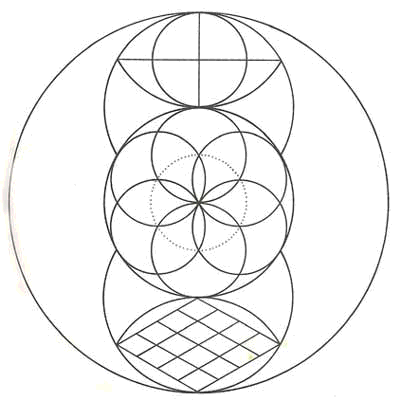
Full view of the geometric form of reality encoded in the parable if the miraculous fish story in John which derives the ultimate connection of the three realms with the Temple of Delhi, namely Pythios whose gematria value of 769 is the circumference of the all-encompassing circle.
Furthermore, the underlying mathematics that illustrate this divine triad can also be seen by starting with a square with width of one side of a square with equal to 1, representing God the Father of the Christian and the One of the Neo-Platonists. The diagonal line within this square where each side is again of width 1 is equal to the square root of 2, or 1.415 – the approximate gematria value for “The God Apollo” (1415). This level of reality is represented by the Nous, or Intellect of the Neo-Platonic triad, the Logos of the Hellenic philosophical which is referred to directly in in John 1, representing the intermediary principle that facilitates and mediates the divine/spiritual and material worlds. And then the material world, Plato’s World Soul, represented by the Net, or the Holy Spirit in the Christian tradition represented by the height of the vesica piscis that is constructed with a width of the square root of 2, the diagonal of our initial square with each side having a length of 1. The height of this final vesica piscis is equivalent to the square root of 2 x the square root of three.
The identification of the One which corresponds to the upper portion of the geometric figure which is constructed above with the side of a perfect square, the identification of the bridge between the one and the many (the Logos) as the diagonal within the perfect square whose value is equivalent to the square root of two – 1.415 roughly equivalent to the gematria value of “The God Apollo” which is 1415 – and then the height of a vesica piscis which is constructed from the same dimension of the perfect square whose diagonal is the same width as the vesica piscis from which can be derived the height of the vesica which yields the square root of two times the square root of three, or 2.448, the perimeter of the net in the geometrical symbology above which again is the gematria equivalent to “Fishes” and “The Net” in the story as related in the Gospel of John, a value and shape (of the net) which not surprisingly he equates to Plato’s World Soul.
In its essential mathematical form then, the parable of the story of Jesus and the miraculous catching of fish by his disciples after he is resurrected can be boiled down to the symbolic representation of the three fold view of reality which was prevalent in esoteric and mystical traditions in the Hellenic world at the time of Christ, starting with a square of sides of 1, corresponding to the Neo-Platonic One and underlying unity of all creation (God the Father), the square root of 2 which is the geometric mean between 1 and 2 (the Monad and Dyad respectively) which in the Greek world was symbolized by Apollo (“The God Apollo” gematria value of 1415), the mediator between the heavenly and earthly worlds presiding over the Temple of Delphi, and then lastly Plato’s World Soul, the “Net” of material reality to which we are all bound denoted by the number 2448 (gematria value of “Fishes” and “The Net”) which is almost precisely equivalent to the square root of two times the square root of three (actually 2.448) and represents the height of the vesica piscis which encompasses the net whose width is equal to the diagonal length of the square with sides of 1 (square root of 2).
These Neo-Platonic esoteric elements can be mapped directly to the Christian theological doctrine of the Trinity, where the One of the Neo-Platonists corresponds to the Father of the Christian, the net of the World Soul corresponds to the Holy Spirit which manifests in the material, sensory world, and the Son of God – Jesus – as the mediator between the two worlds, the Logos of the Hellenic tradition who is manifest in the flesh for the salvation of mankind. Note that this connection to this Greek philosophical tradition and to the Logos doctrine specifically is called out in the opening verse of the Gospel of John itself – “In the beginning was the Word [logos], and the Word [logos] was with God and God was the Word (logos)”[1]. This Logos construct in many respects represents the penultimate theological bridge between the divine and material worlds in the synthesized and most evolved form of the Greek philosophical tradition, at least how it was absorbed and adopted by the early Christian theologians (and Gnostics). In the Neo-Platonic tradition which continued to evolve somewhat independently of early Christianity, it was referred to as Nous, or the divine Intellect, but the concept was the same – it was the means by which the supernatural could become materially manifest, implying order and reason behind the construction itself and at the same time not being an independent force as it were but one which was metaphysically equivalent with its ontological parent, the One, as well as its ontological child, the (World) Soul[2].
It is not inconceivable then, especially given the first marginalization and then later persecution of the Gnostic sects which attempted to bridge the Hellenistic philosophical doctrine with the interpretation of the meaning of Christ and his message, that the authors of this particular Gospel would try and encode the esoteric and symbolic messages that had been passed down through Pythagoras, Plato and then others within the text itself, burying the meanings in hidden relationships in a story and parable, related to fish of course, that all of the followers of Christianity could glean something from, while at the same time glorifying Jesus as one who was raised from the dead and as a performer of miracles.
[1] Translation directly from the Greek, i.e. literal translation taken from http://biblehub.com/text/john/1-1.htm.
[2] This triad, in both the Neo-Platonic tradition as well as in the early formulation of the doctrine of the Trinity, were described as being of one substance, or of one underlying essence, where three hypostases in one ousia (substance or essence) came to be accepted as the standard and orthodox position regarding the Trinity in early Christianity. See http://en.wikipedia.org/wiki/Hypostatic_union.

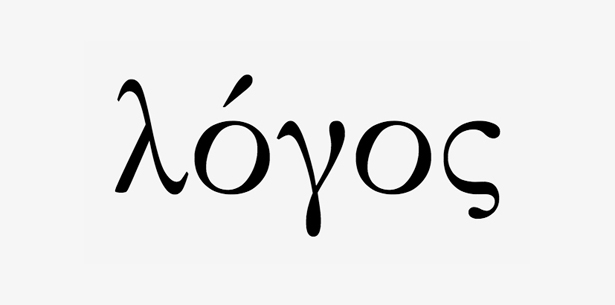
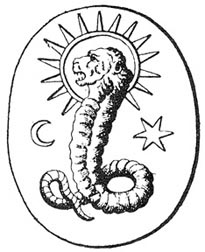
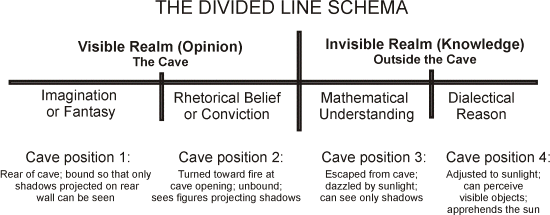
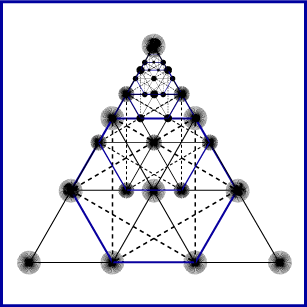
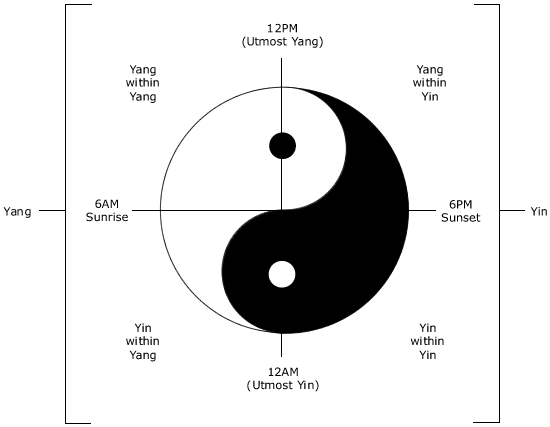
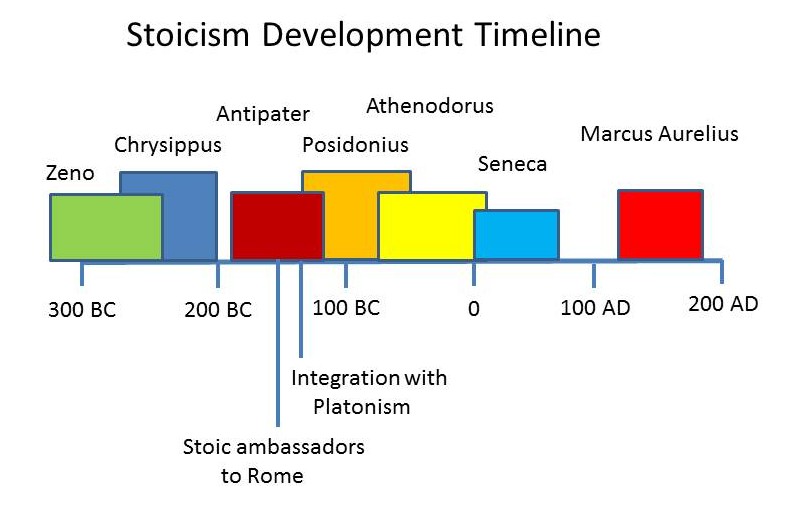
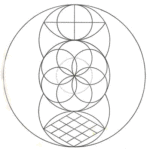
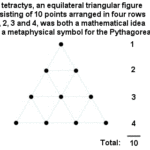
Is this work after John Michell?
Who is John Michell?